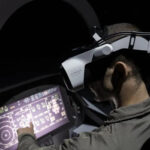The Benefits of Immersive Collaboration for Modern Teams
Demand for immersive collaboration solutions continues growing in a world of flexible working practices. Even as companies encourage teams to get back into the office, they still need a way to connect hybrid teams and boost efficiency, productivity, and creativity.
Extended reality technologies, set to reach a value of 1.7 billion by 2032, introduce various ways to connect teams, enhance customer service, and even reduce operational costs. Now, more apps and devices are emerging, focusing on enterprise use cases.
From solutions like Microsoft’s Immersive Spaces, to the Apple Vision Pro, companies have numerous ways to make the workspace more immersive. Here’s why you should be investing in immersive collaboration this year.
1. Immersive Collaboration Improves Inclusivity
The flexible workspace, defined by hybrid and remote workers, can help businesses reduce costs and improve employee satisfaction. But it’s not without its challenges. Remote staff often feel isolated and overlooked. Studies have even shown that managers give remote employees less attention.
Companies need to create an inclusive, immersive workplace to maintain high productivity levels and retain talent. With extended reality and the metaverse, organizations have an opportunity to recreate the sense of “presence” distributed teams need.
Immersive applications, from Zoom on the Apple Vision Pro to Microsoft Teams’ Mesh-powered workspaces, can reconnect distributed staff in a shared virtual space. What’s more, extended reality solutions can be tailored to fit everyone’s needs. AI assistants, live captioning options, and more can ensure people with disabilities can participate actively in workplace meetings.
With spatial computing and customizable avatars, everyone can have an equal position in the workplace, boosting feelings of inclusivity.
2. Enhanced Collaborative Productivity
Enabling effective collaboration between distributed workers can be difficult. Even with video conferencing and digital whiteboarding tools, it’s difficult for everyone to “dive in” to certain meeting sessions. Immersive collaboration can improve interactivity in meetings.
With XR meeting platforms, employees have new ways to interact with content and each other in more powerful ways. For instance, Pfizer uses an AR collaboration platform in virtual meetings, which allows participants to interact with 3D models of products and annotate documents in real time.
An AR or MR solution can allow businesses to deliver three-dimensional guidelines and information to team members wherever they are, bridging the links between employees and data. In virtual reality, companies can even create digital twins of products and environments. The result is a more “hands-on” approach to collaborative productivity.
3. Immersive Collaboration Accelerates Development
Extended Reality has the power to unlock our true creative potential by eliminating the restrictions of the real world. This gives companies a fantastic opportunity to enhance product development strategies. With immersive collaboration solutions, research and development teams can experiment with projects, identify issues faster, and discover new ways to innovate.
Teams can use digital twins, AI, and extended reality to create simulations of different products and processes, testing how they work without wasting resources. Companies like Volkswagen already use mixed reality solutions to reduce production and development times by up to 10%.
In a virtual environment, teams can experiment with CAD design tools, blueprints, and a range of materials and resources, all without unnecessary development costs. This is paving the way for rapid ideation and development in numerous industries, from automotive manufacturing to healthcare.
4. Improved Onboarding and Training
Training and education have emerged as one of the most valuable use cases for XR technology. In every industry, companies use VR, AR, and mixed-reality solutions to create immersive, hands-on learning experiences for students. XR gives users access to virtual scenarios replicating real-life situations while minimizing risks. For instance, in healthcare, surgeons can practice procedures in a virtual environment before using their skills on real-life patients.
Immersive collaboration tools allow teams to work together in virtual landscapes and with digital content, improving team training exercises. The right resources can help employees share knowledge more effectively and develop crucial communication and leadership skills.
In a collaborative XR setting, teams can also forge stronger bonds. For instance, the Microsoft Teams Immersive Spaces app already features virtual settings designed for team building.
5. Reduced Costs and Carbon Footprints
Although there are costs to consider when implementing immersive collaboration in the workplace, the right technologies can save companies money in the long term. Offering staff immersive collaboration tools can streamline product development and reduce waste, as mentioned above. It can also eliminate the need to invest in additional real estate for training sessions, meetings, and more.
Plus, immersive tools can empower staff members to accomplish more with less by improving productivity and creativity. Studies are even discovering that extended reality can help businesses achieve their sustainability goals.
Companies like Rivian are using XR technology to reduce the amount of raw materials used in a car’s manufacturing lifecycle. Other organizations use extended reality to reduce the need for teams to travel to office locations, reducing carbon emissions on a significant scale.
6. Immersive Collaboration Boosts Talent Retention
In a skills-short environment, companies need to find new ways to attract and retain team members. Immersive collaboration could be the solution. Already, 75% of employees have said they’re interested in working in the metaverse. Additionally, the ability XR has to enable immersive remote working experiences allows companies to offer a wider range of employment options to teams.
XR solutions can even make it easier for businesses to hire and interact with employees from all over the globe, offering access to a wider talent pool. Plus, they offer a way for companies to test the skills of the candidates they’re hiring by assessing their performance in virtual scenarios.
In addition to attracting new team members to the business, XR solutions can boost retention by helping staff members forge deeper relationships and offering access to more effective training strategies.
VR and AR solutions can even help to create a more appealing workplace, where team members can tap into meditation solutions during stressful periods.
Discover the Benefits of Immersive Collaboration
Immersive collaboration technology offers organizations an incredible opportunity to improve company culture, enhance productivity, and even reduce costs. With the right technologies, you can optimize everything from training to product development sessions.
As the XR landscape continues to evolve, with a heavy focus on enterprise use cases, now is the perfect time to start investing in immersive collaboration.
Quelle:


